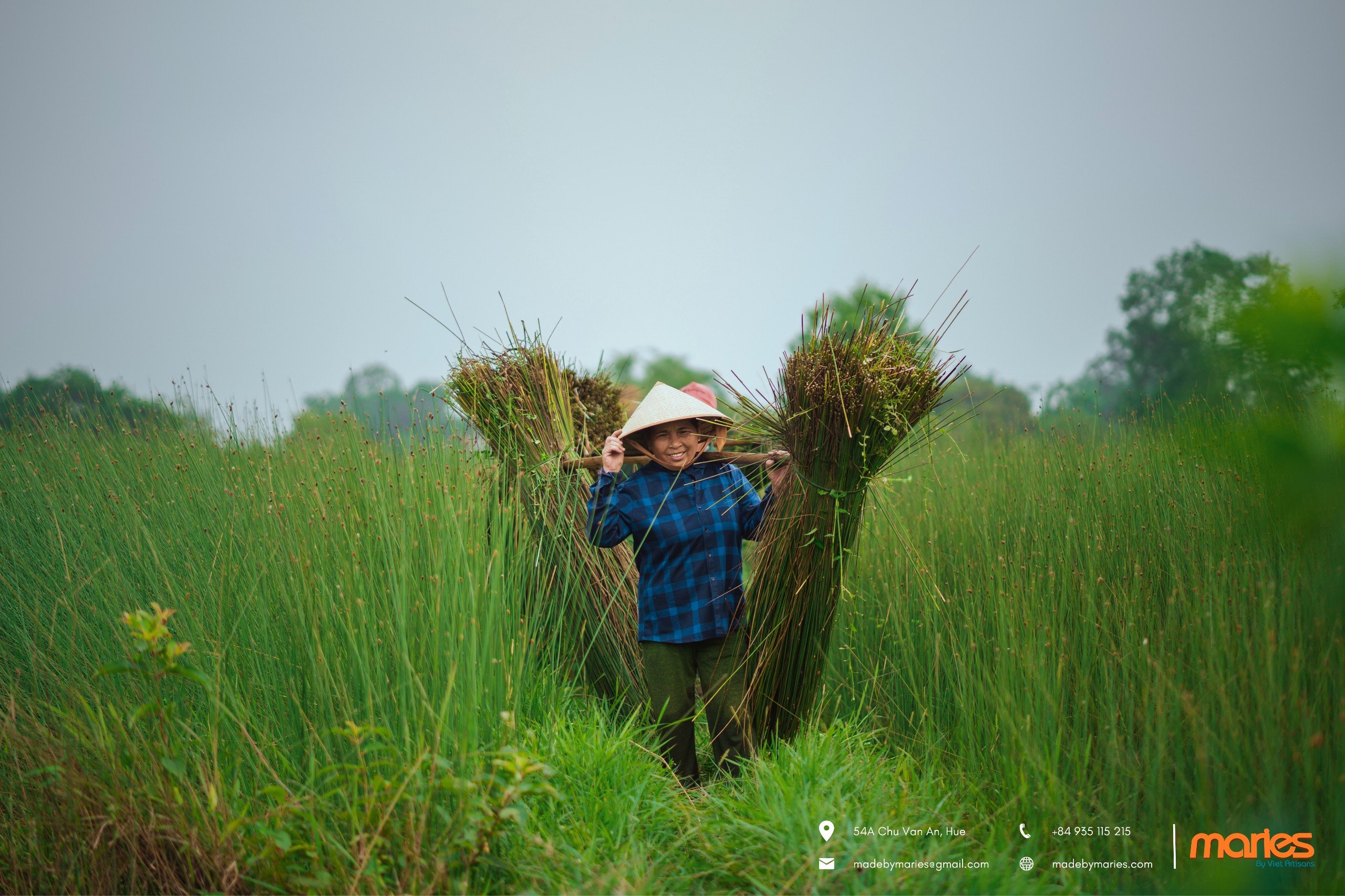THE 2024 LEPIRONIA GRASS HARVEST SEASON
Where Maries Nurtures Dreams of Happy Homes – The Prosperous Village

“Dear, the sun is gentle these days, your uncle and aunt are preparing to go to the fields to harvest lepironia grass…”
Finally, the new lepironia grass harvest season has arrived. Aunt Lien’s cheerful voice rang out along with laughter over the phone. Our Maries team promptly prepared the necessary tools: scripts, cameras, and a very eager mindset to set off early the next morning, hoping to capture the most memorable moments of this new harvest season ~ THE 2024 LEPIRONIA GRASS HARVEST SEASON!
Harvesting at the Right Time và Sun-Drying Enough…
Everyone must be wondering, why do uncle and aunt choose days with gentle sunlight to harvest lepironia grass? 😄
It’s because days with mild sunshine ensure that the lepironia grass fibers, after being harvested and filtered, and then dried under the gentle sun 5 to 6 times, will have the best color and durability. Previously, lepironia grass was only used to weave mats or market bags, so there was no need to be as meticulous about the sunlight as now. But now, to produce fashionable and high-quality products like Maries’ bags, hats, wallets, and caps, the lepironia grass fibers need to be harvested at the right time and dried adequately.
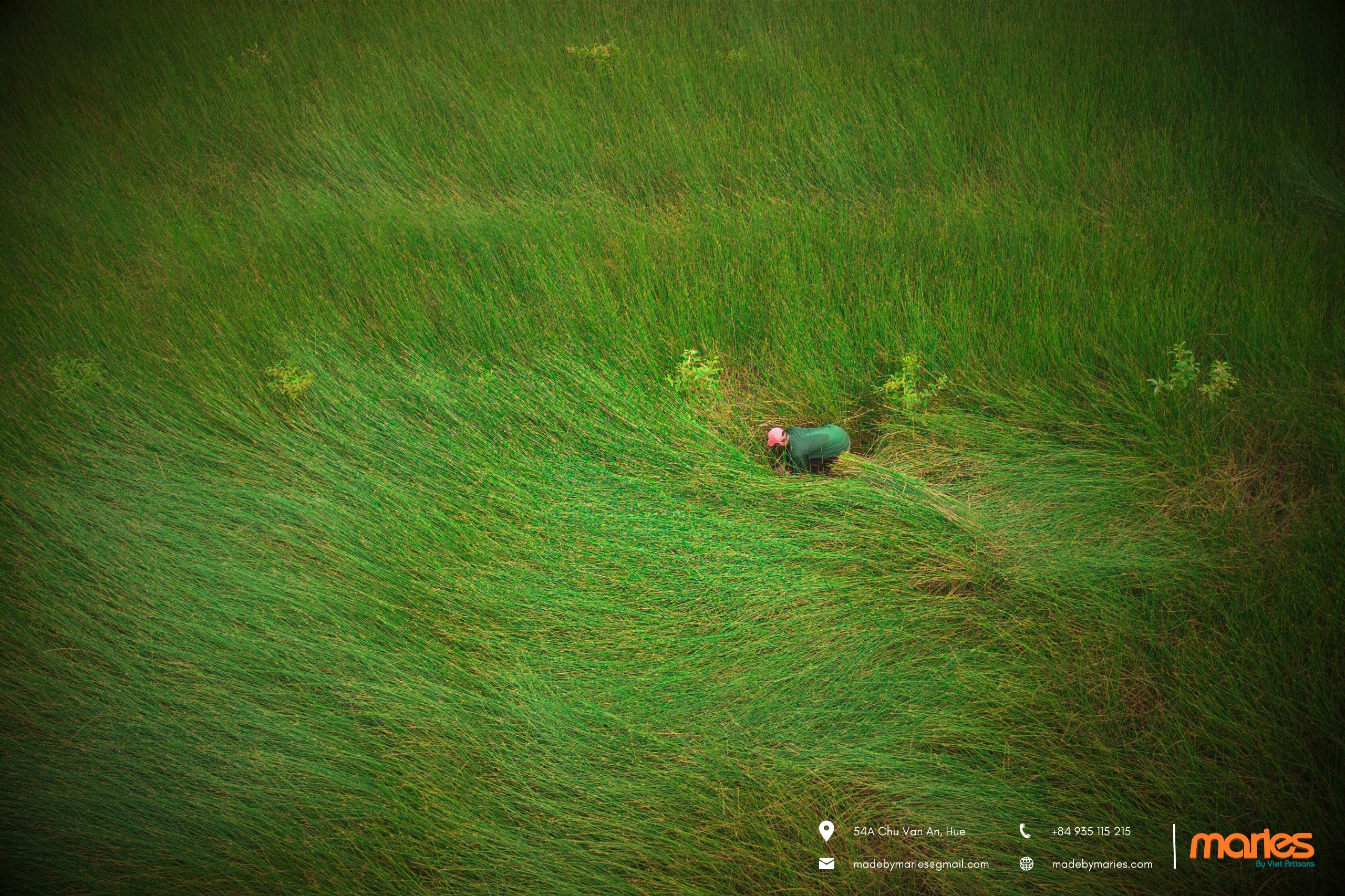
Ms. Nguyet, Uncle Thanh’s daughter, shared:“In the morning when I wake up and see beautiful weather, my uncle goes to harvest immediately, so there are some fields I couldn’t inform you about in time.”
That’s why at the end of March and the beginning of April, everyone in the village is prepared, and as soon as the weather is nice, they grab their tools and head to the fields immediately.
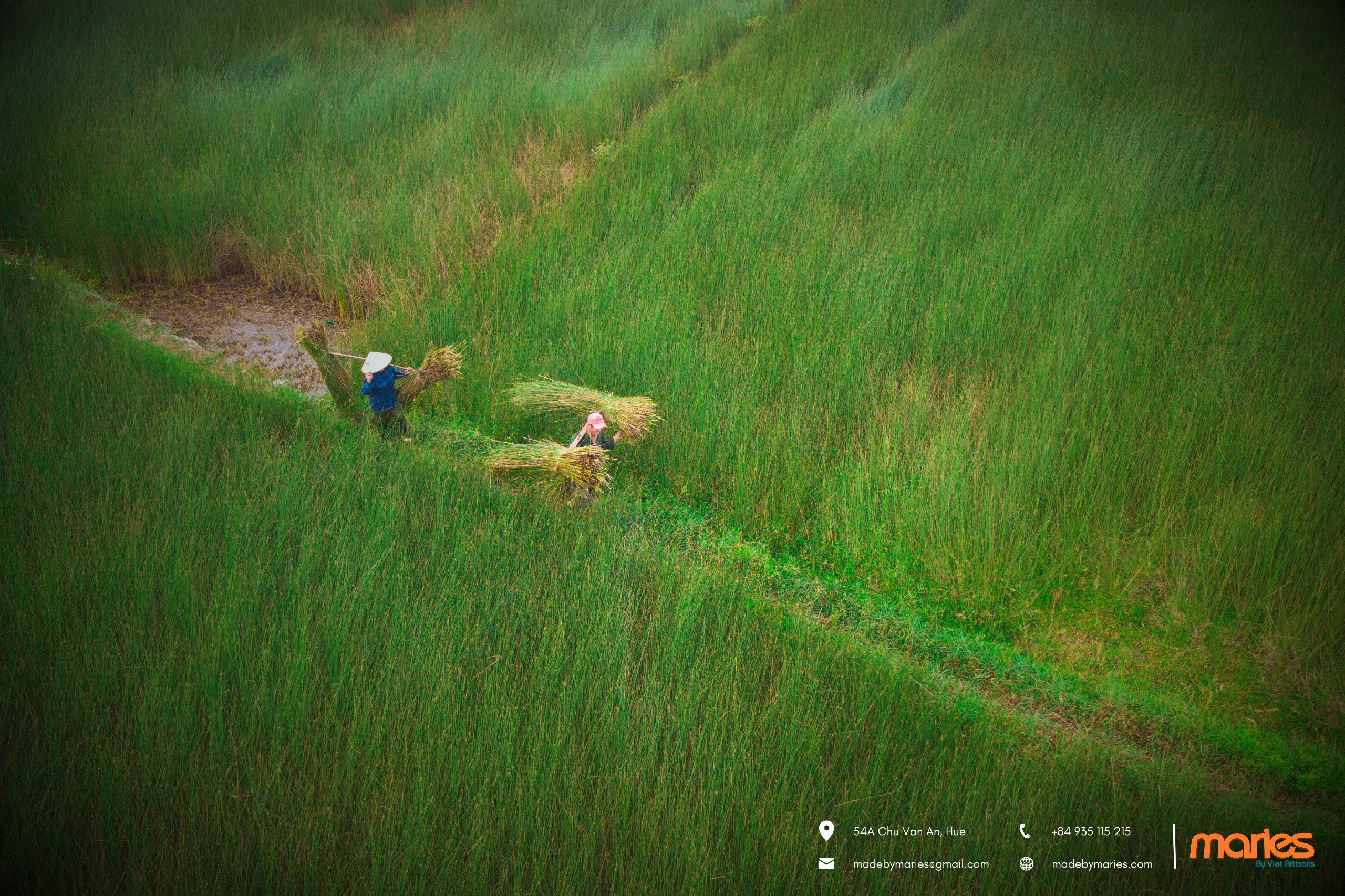
The “Grass That Creates an Economy”
“Braving the sun and rain, harvested only in two seasons each year.”
Sitting in the car, looking out into the distance, you can see fields with tall, straight stems reaching 1.5 to 2 meters high – those are lepironia grass fields. The shorter, light green fields are rice fields. In Pho Trach, since these “grass that creates an economy” appeared, the area planted with lepironia grass has expanded from 5-5.3 hectares to 12-15 hectares. Each household has at least 500 to 1000 square meters of lepironia grass interspersed with rice.
Standing at the edge of the field, you only hear the rustling, splashing sounds and see the Lepironia grass swaying. You have to look closely to spot the backs of uncle and aunt, hidden among the tall “forest of Lepironia grass.”
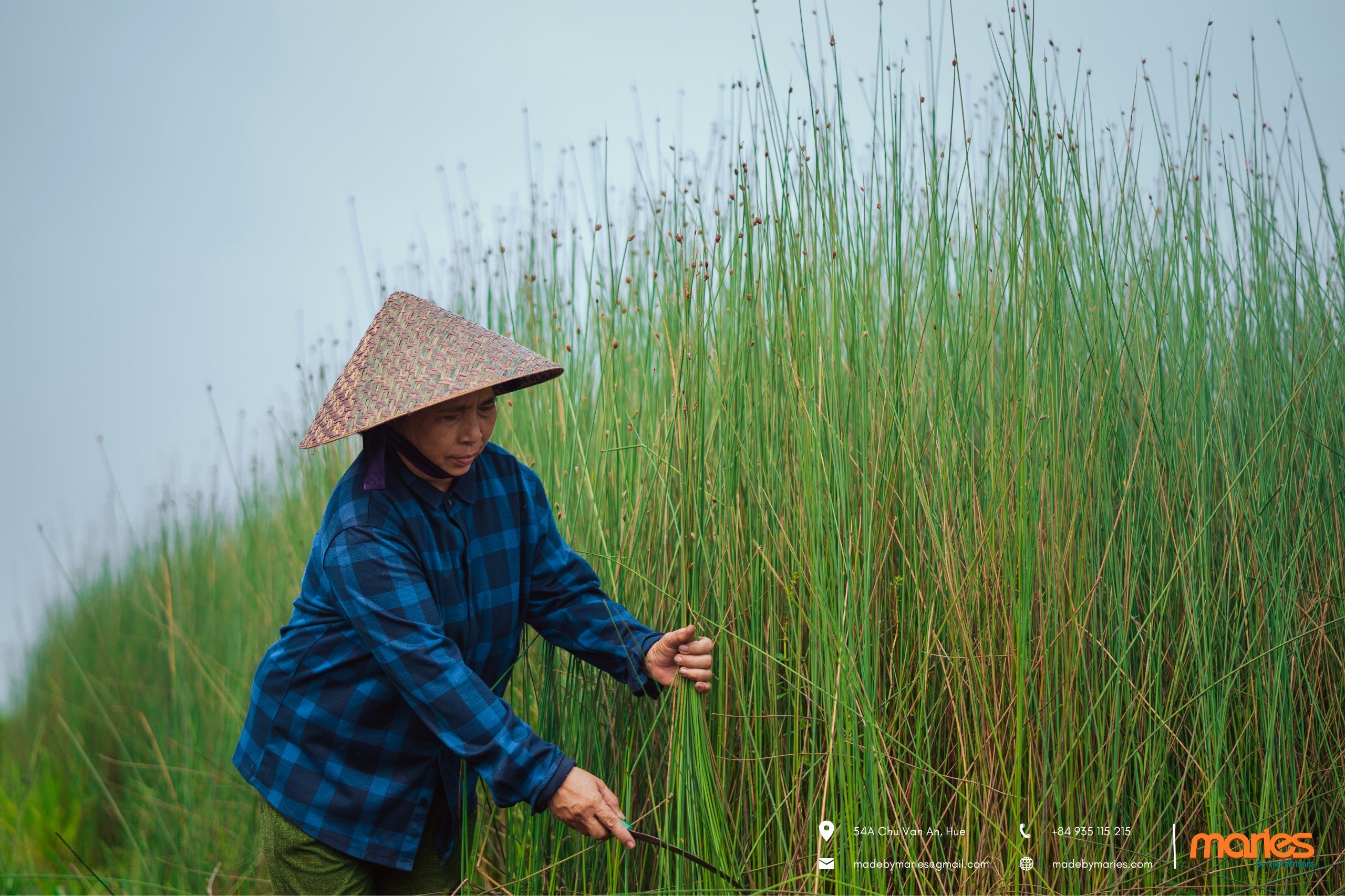
According to the people of Pho Trach, lepironia grass is a type of grass that can withstand all weather conditions, confidently growing tall no matter the rain or wind. However, taking care of this plant is not simple. While planting lepironia grass is as easy as transplanting the root to another place without much fertilizer or care, dealing with weeds is a significant challenge. Using herbicides isn’t a solution because they can harm the lepironia grass, so everything has to be done manually.
The hard part is that with the tall, stiff, and pointed lepironia grass stems, uncle and aunt’s faces and hands are easily injured. Moreover, since lepironia grass grows in muddy water areas, sometimes uncle’s legs get bitten by leeches, leaving scars on his ankles.
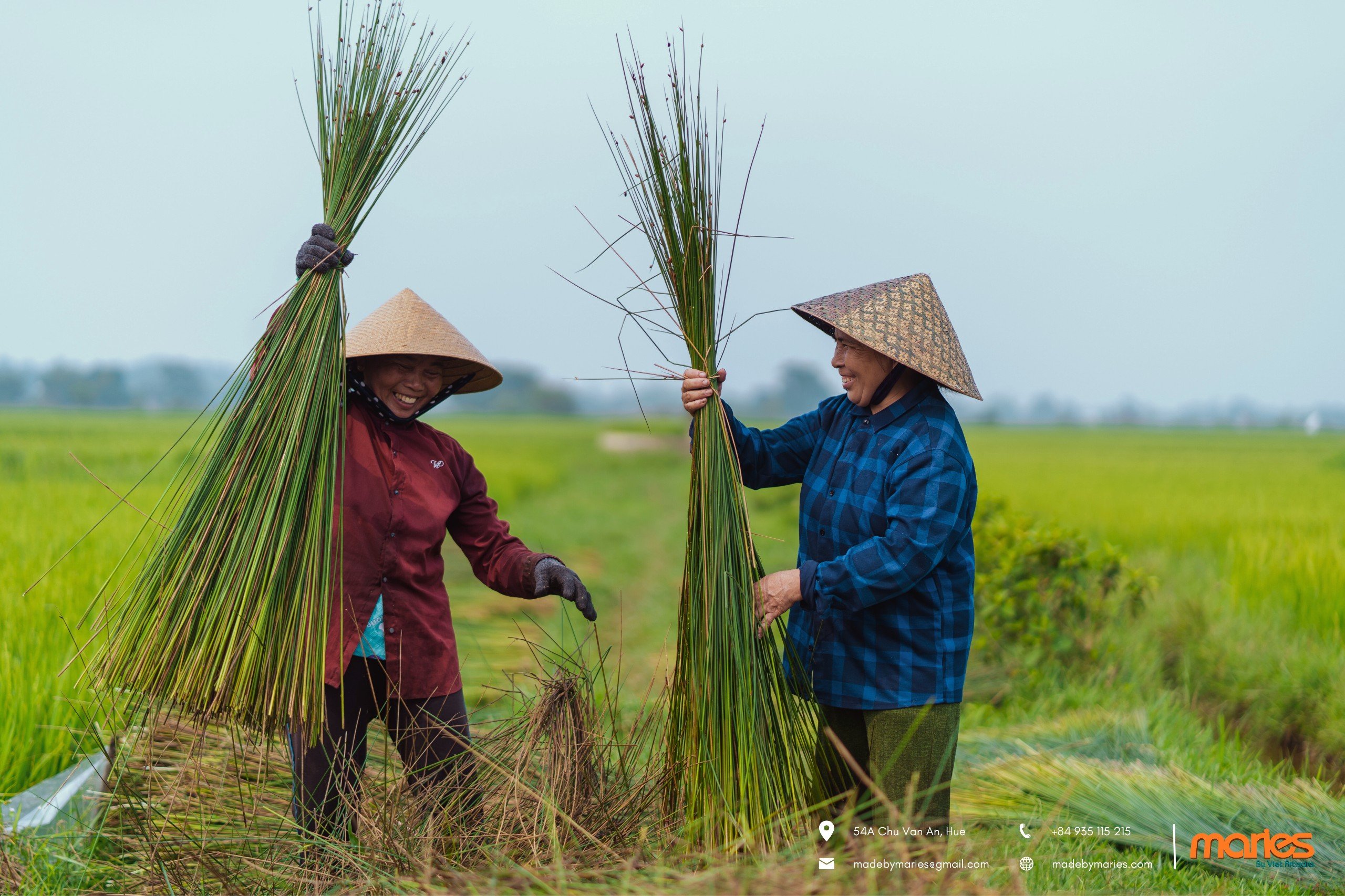

On the way back from the fields, along the paved roads at the entrance of each village, you can hear the clattering sounds from the “Lepironia grass pounding machines.” To operate these machines, one must eat well 😄 because it takes three women together to make the machine work. We had thought about making an electric-powered pounding machine to ease their workload, but the Lepironia grass fibers would break and fray more easily if processed by a machine, so they still prefer the traditional pounding mortar.

>> Read more: Maries Community Activities
The Continuation of Tradition and Modernity
In recent years, uncle and aunt go to harvest lepironia grass with new hopes and joys because Hue’s lepironia grass has gained more recognition. Maries and many other organizations are contributing to promoting local cultural values further, creating aesthetically pleasing and practical products that fit into modern life.
Fashion items like hats, handbags, caps, and wallets made from lepironia grass not only connect the creative young generation with the 500-year-old craft but also connect those who appreciate the rustic charm of traditional, eco-friendly handmade products.
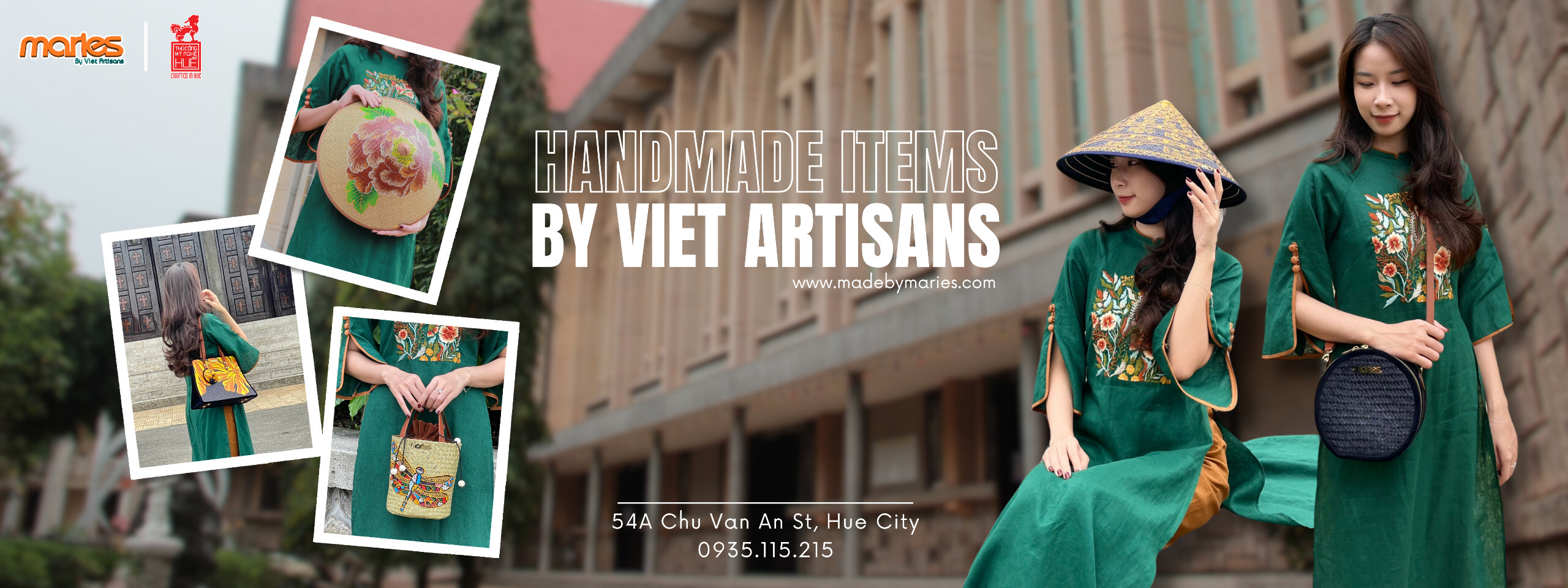
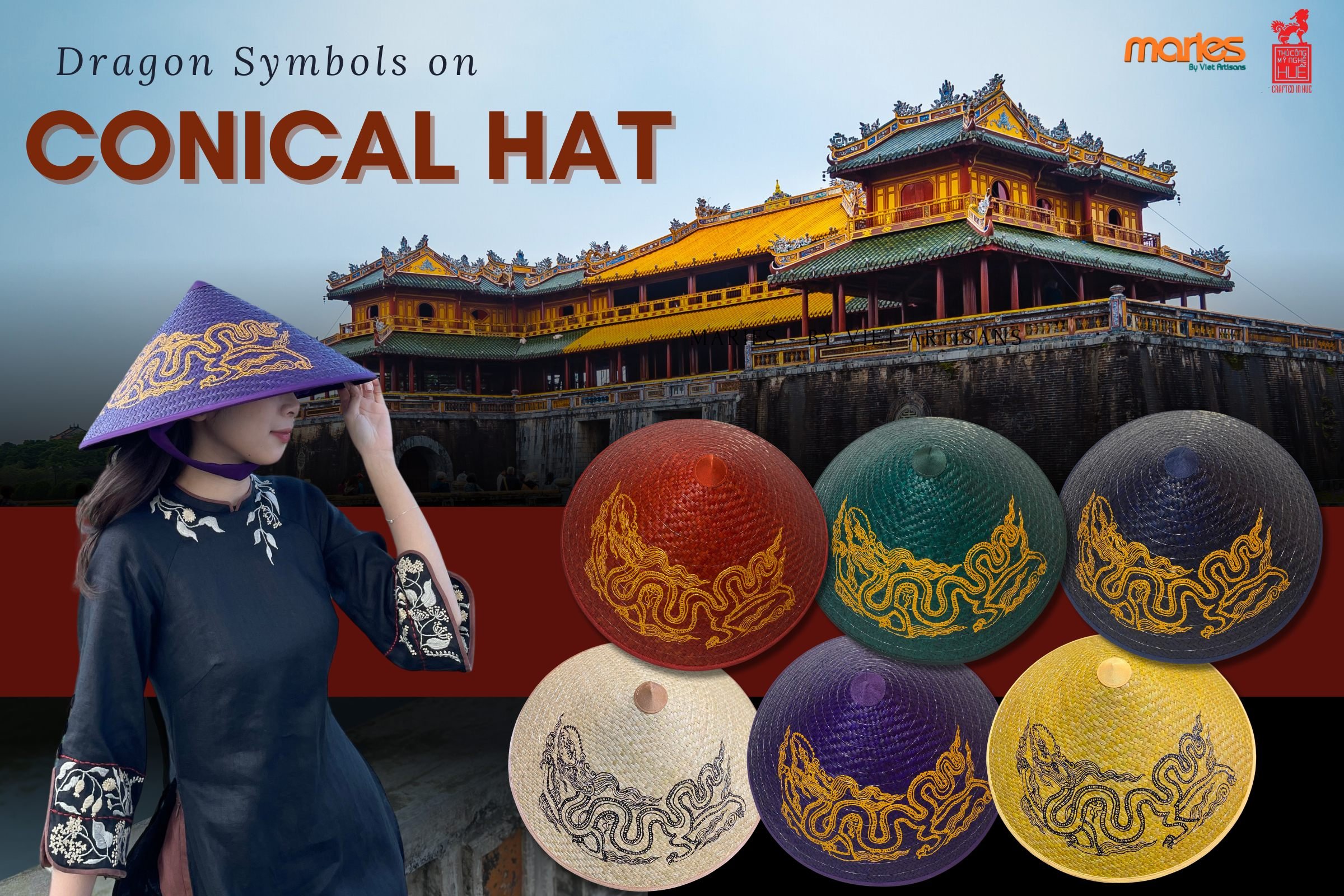
>> >> Read more: Maries’ Stories | Lepironia Grass and the Radiant Journey
Lepironia Grass Products from Hue by Maries have undergone a long journey before reaching customers and partners. Every stage in the process reflects the dedication of the artisans and team to create high-quality, unique handicrafts from local natural materials.
We hope everyone understands the true value of each lepironia grass product and the community values Maries aims to convey. Maries is committed to being an extended arm of traditional Vietnamese crafts, for a sustainable and prosperous community.
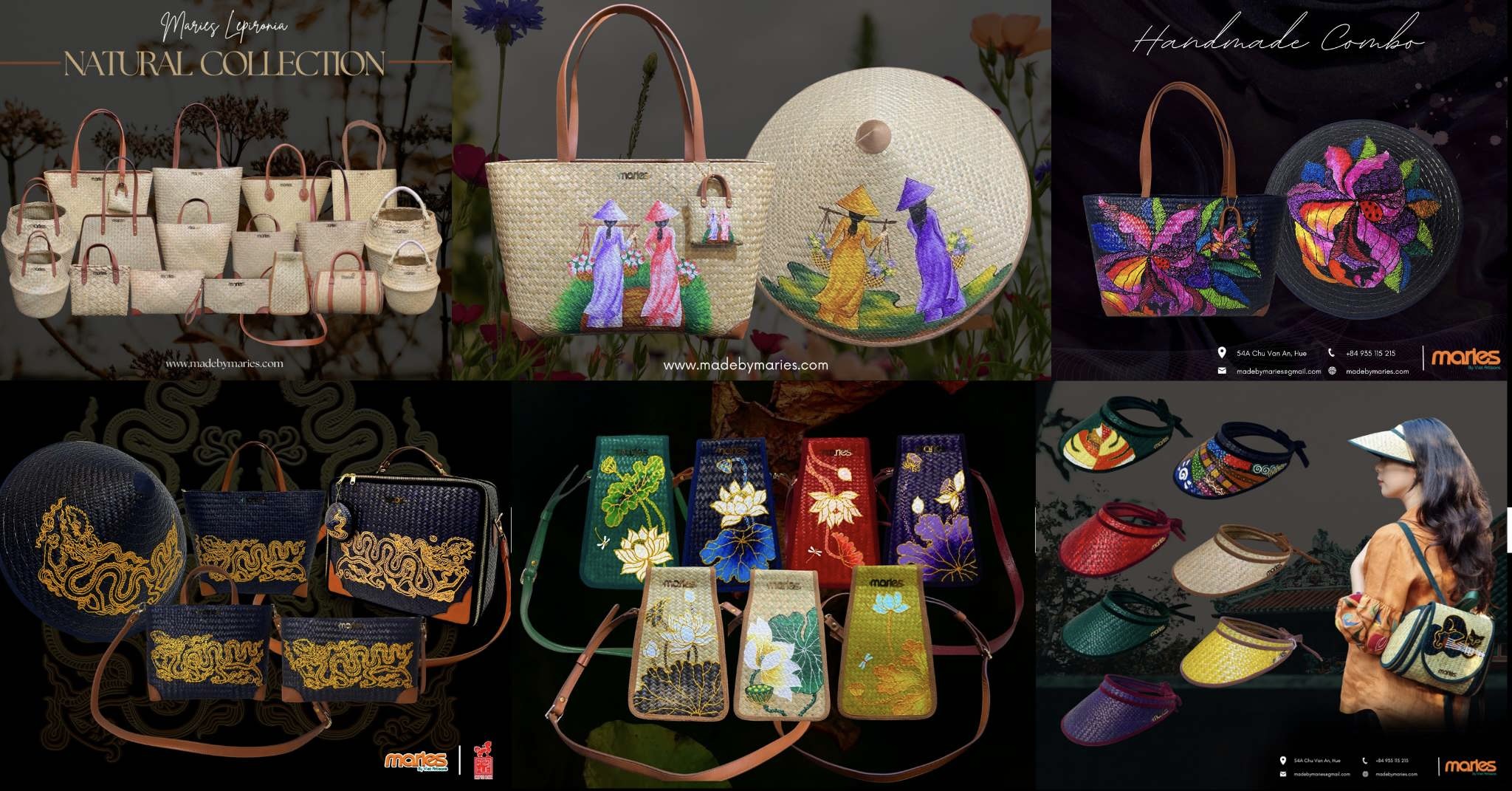

Maries, 13/04/2024

